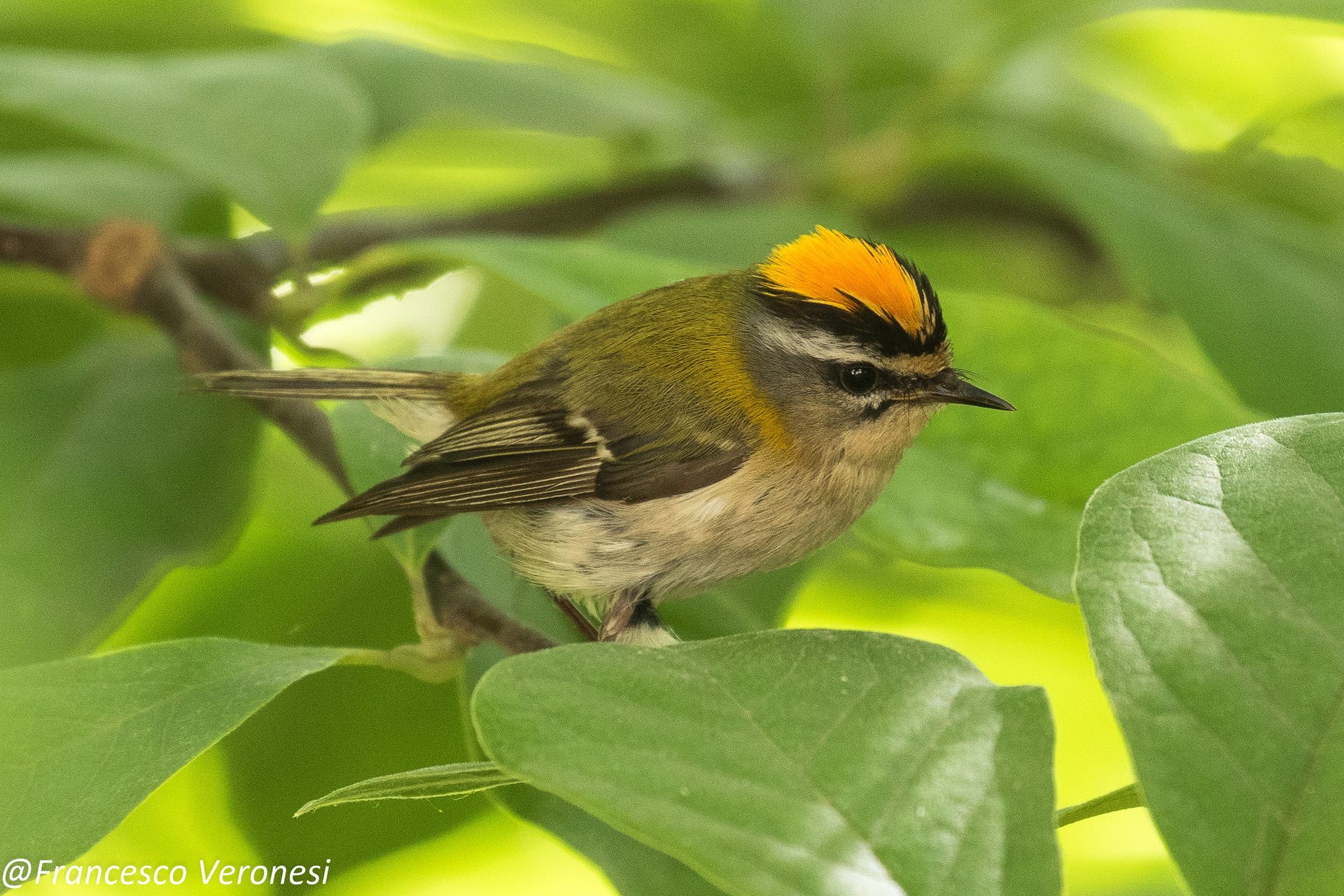
© Francesco Veronesi (Flickr)
Firecrests (Regulus ignicapilla) are tiny passerine birds of the kinglet family. They are rarer than Goldcrests and more striking in their appearance.
These colourful little birds (along with the Goldcrest) are the UK's tiniest – even smaller than a Wren!
Firecrests have an olive to bright green upper body with white underparts and a yellow-bronze shoulder patch that stretches around the sides of their neck. Their dark wings have two white wing bars and white tips to the inner flight feathers. They have dark eyes, pointed bills and brown legs and feet.
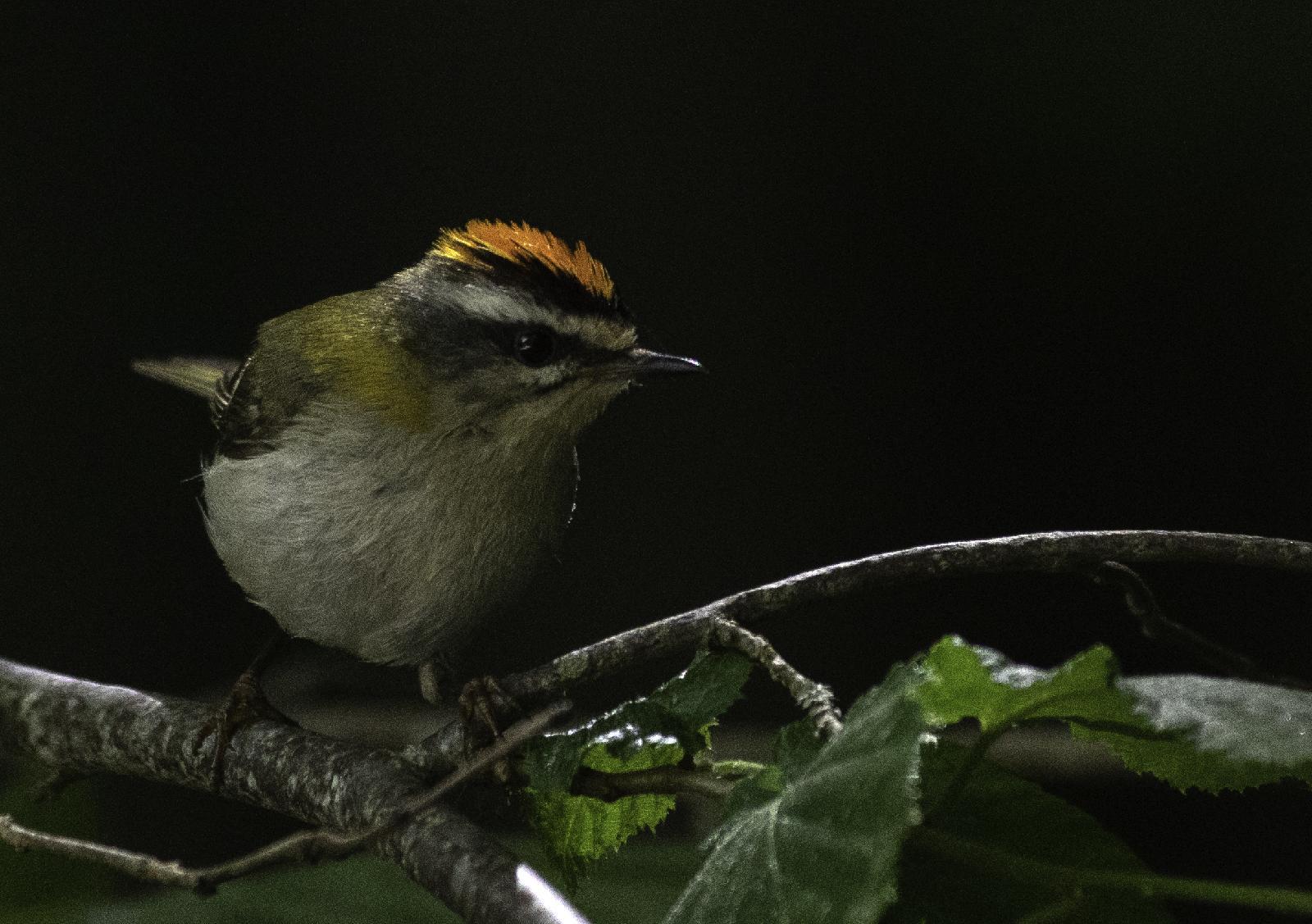
© Sue (Flickr)
But the Firecrests' most distinctive markings are on their heads. Their black cap has a bright orange stripe (yellow in females) through the middle. In addition, they have a whitish patch that extends backwards above the eye.
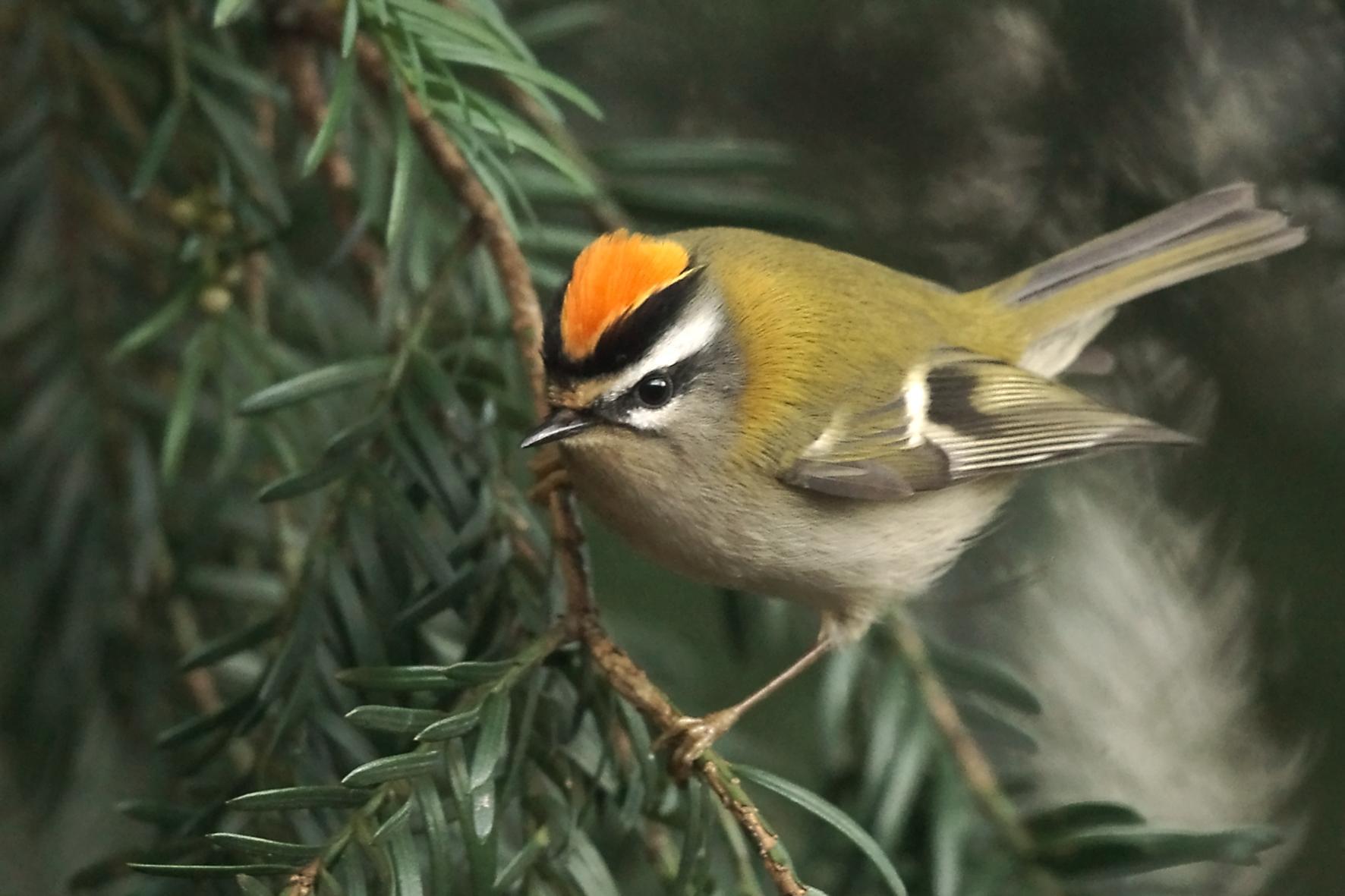
© Sukram 73 (Flickr)
Firecrests closely resemble Goldcrests, but their bronze shoulders and strong face pattern (white stripe above their eyes and a crescent below) are distinctive. Generally, the Firecrest has cleaner, brighter colours.
Goldcrest, © Dave Curtis.
Firecrest, © Nik Borrow. (Flickr)
Song
Firecrests have a contact call with three or four delicate, high notes: zit-zit-zit.
Their song is a series of notes in a long and variable sequence that usually lasts a couple of seconds and may be repeated up to eight times a minute. They sing most often just after dawn and taper off through the day.
Another Firecrest song
© Patrik Åberg
Did you know
Firecrests have been spotted breeding near Goshawk nests. The Goshawk indirectly protects them by hunting Sparrowhawks, Jays, Squirrels and Great Spotted Woodpeckers that threaten the Firecrest or its eggs/chicks.
© Francesco Veronesi (Flickr)
Breeding
Firecrests are monogamous, with an average life expectancy of two to three years. The male's courtship display includes pointing their bill towards their mate to show their crest and strong facial pattern and hovering over the female.
Firecrests build their nests in mature trees covered in creepers like ivy, often suspended from a hanging branch. Sometimes they use spider webs to help secure the nest to thin branches. The open cup shape nest is made from a layer of moss, lichens twigs and spider webs, a middle layer of softer mosses and lichens, and an interior lining of down, hair and feathers.
Firecrests lay 6-13 pink eggs with red markings over two broods. The eggs hatch after two weeks, and the chicks fledge about three weeks later. After fledging, the parents feed them for another two weeks.

Egg of Firecrest, collection of Jacques Perrin de Brichambaut at the Museum De Toulouse © Didier Descouens (Wikimedia)
Firecrests are often heard in the topmost branches as they constantly flit around foraging amongst the foliage.
© Hans Norelius (Flickr)
Did you know
The Firecrest's scientific name has a royal ring. Regulus ignicapilla translates roughly as the fire-capped little king. They may be the original "king of the birds" of European folklore.

Distribution in Suffolk
They are found throughout much of southern England. In autumn and winter, their numbers increase as migrant Firecrests arrive from across the North Sea.
Comprehansive distribution maps can be seen on the Suffolk Bird Atlas 2011

Habitat
They can be found in broadleaf trees in evergreen woods. However, they can also thrive in some urban areas if there is suitable habitat, for example, parks or large gardens. The population density of Firecrests in gardens can be almost as high as in natural habitats.
© Bjorn Lundquist (Flickr)
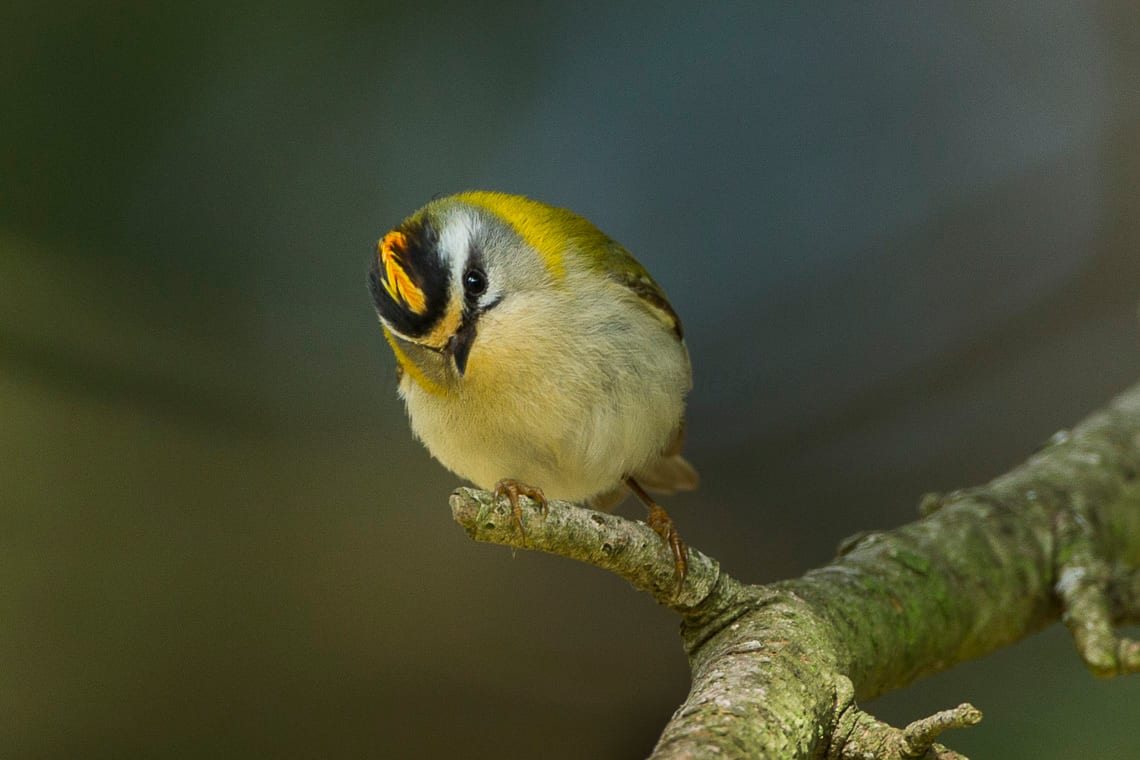
Diet
Newly hatched Firecrest chicks are fed springtails and occasionally spiders. After a week, aphids and snail shells (which provide the calcium needed for bone growth) are added. As the chicks grow, more invertebrates are introduced, such as larger moths, caterpillars, harvestmen, earwigs, and centipedes.
© Francesco Veronesi (Flickr)
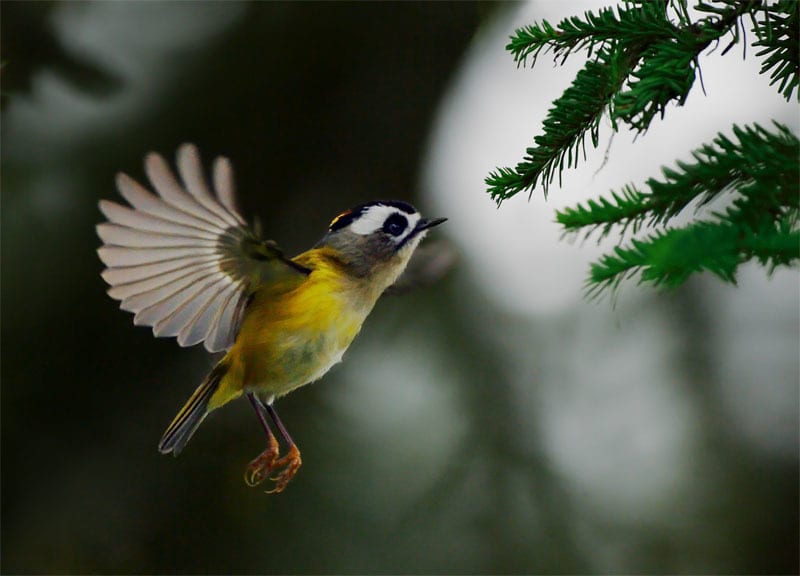
Adult Firecrests are almost exclusively insectivorous, preying on springtails, aphids and spiders. However, they will also feed on the cocoons and eggs of spiders and insects. In addition, they have been spotted hovering to catch flying insects or killing large invertebrates by beating them repeatedly against a branch. They will take trapped insects from spider webs during migration. They will also eat larger orb-web spiders, although this is not without risk, as Firecrests are so small they have been found stuck in the webs.
© John&Fish (Flickr)
© Frank Vassen (Flickr)
Spotting Firecrests
Evergreen woodland is a good place to see Firecrests. They are easiest to see in autumn and winter, when they range around in flocks of other small birds, such as tits and warblers. However, they can sometimes appear in gardens, hedgerows, and scrub. The BTO has created a useful identification guide.
If you are lucky enough to spot Firecrests don't forget to record your sighting!
